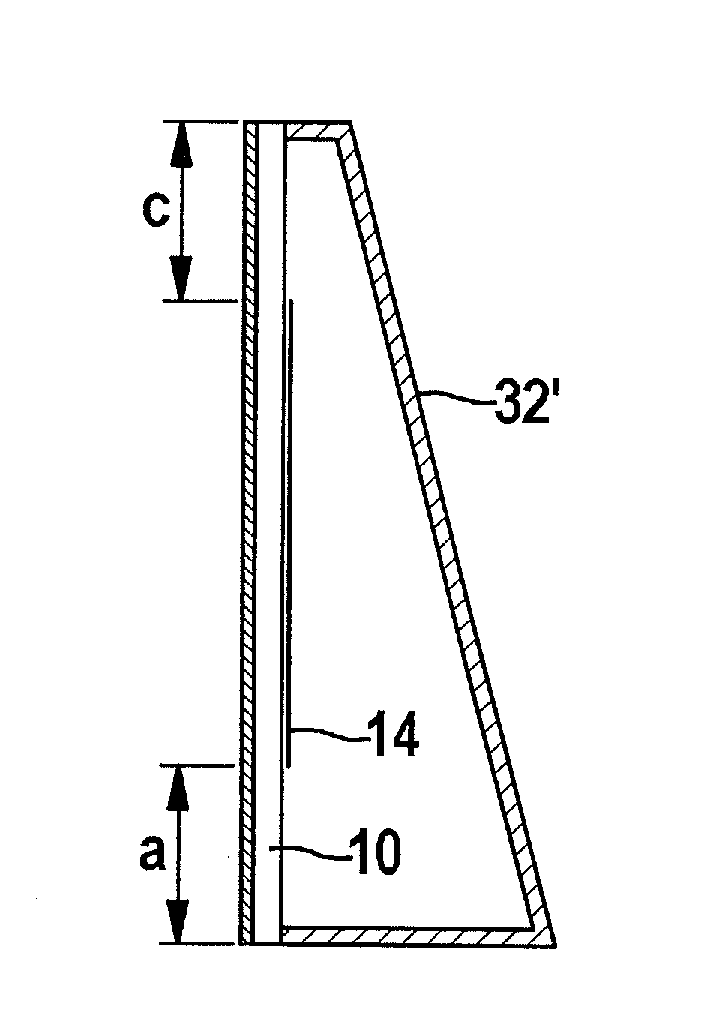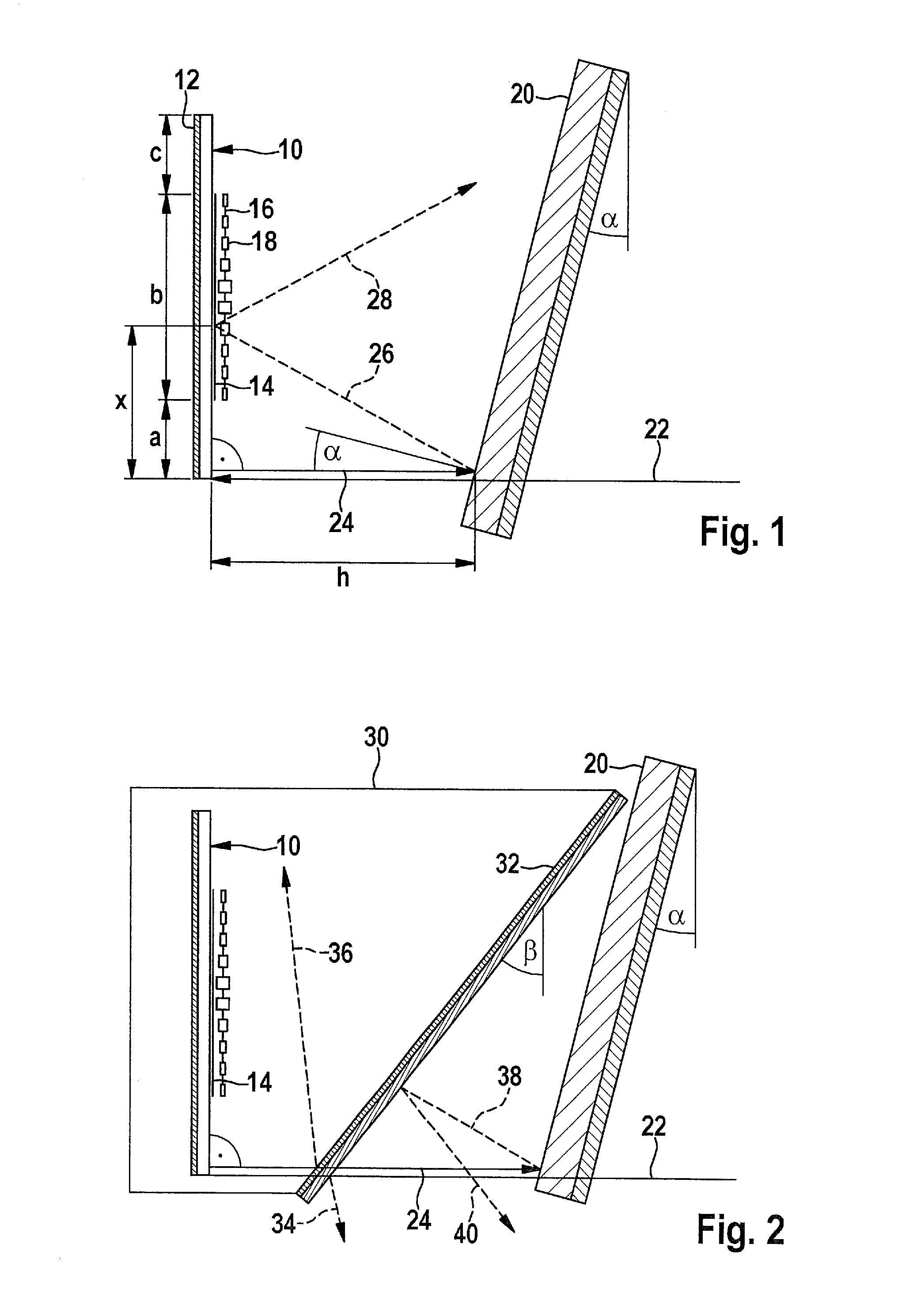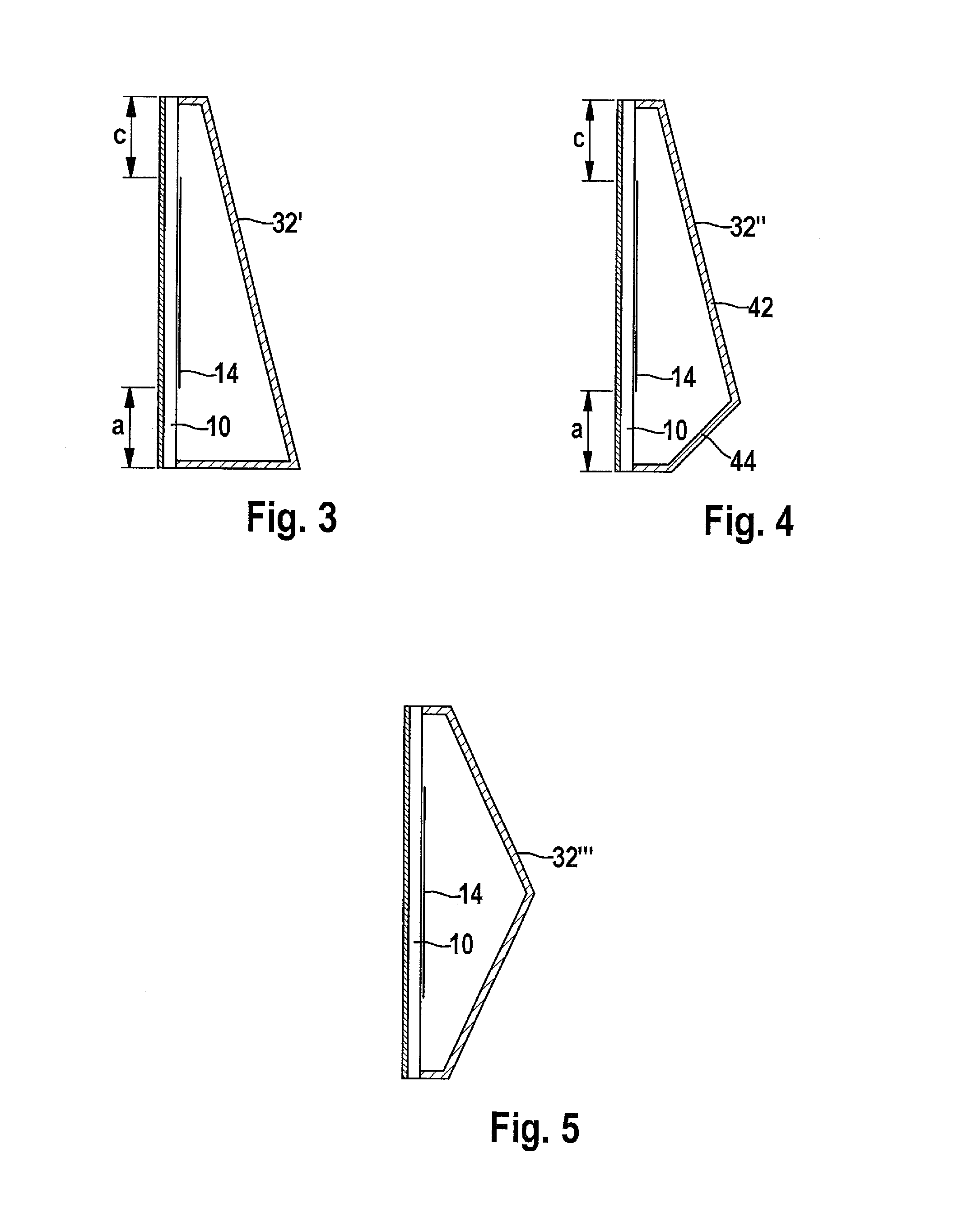Radar sensor including a radome
a technology of radar sensor and radome, which is applied in the direction of reradiation, protective material radiating elements, instruments, etc., can solve the problem of significantly more severe attenuation of multiple reflections between printed circuit boards and bumpers, and achieve the effect of avoiding interference and reducing the number of attenuation
- Summary
- Abstract
- Description
- Claims
- Application Information
AI Technical Summary
Benefits of technology
Problems solved by technology
Method used
Image
Examples
Embodiment Construction
[0018]A side view of a printed circuit board 10 in the form of a plane plate of a radar sensor of a motor vehicle is shown schematically in FIG. 1, the printed circuit board being mounted in a vertical orientation in the front area of the motor vehicle, which is not shown. Printed circuit board 10 carries mass structures 12, which in the example shown have the form of a metallization on the rear side of the printed circuit board. Furthermore, on its front side, printed circuit board 10 carries antenna structures 14, for example, in the form of multiple vertical gaps 16 of antenna elements 18. A single one of these gaps 16 is shown schematically also in layout in FIG. 1.
[0019]Antenna elements 18 of each gap are connected in series to a high-frequency signal of an oscillator, which is not shown. The dimensions of antenna elements 18 and the distances between them are selected in such a way that the resonance vibrations excited in individual antenna elements 18 have phase and amplitude...
PUM
 Login to View More
Login to View More Abstract
Description
Claims
Application Information
 Login to View More
Login to View More - R&D
- Intellectual Property
- Life Sciences
- Materials
- Tech Scout
- Unparalleled Data Quality
- Higher Quality Content
- 60% Fewer Hallucinations
Browse by: Latest US Patents, China's latest patents, Technical Efficacy Thesaurus, Application Domain, Technology Topic, Popular Technical Reports.
© 2025 PatSnap. All rights reserved.Legal|Privacy policy|Modern Slavery Act Transparency Statement|Sitemap|About US| Contact US: help@patsnap.com



